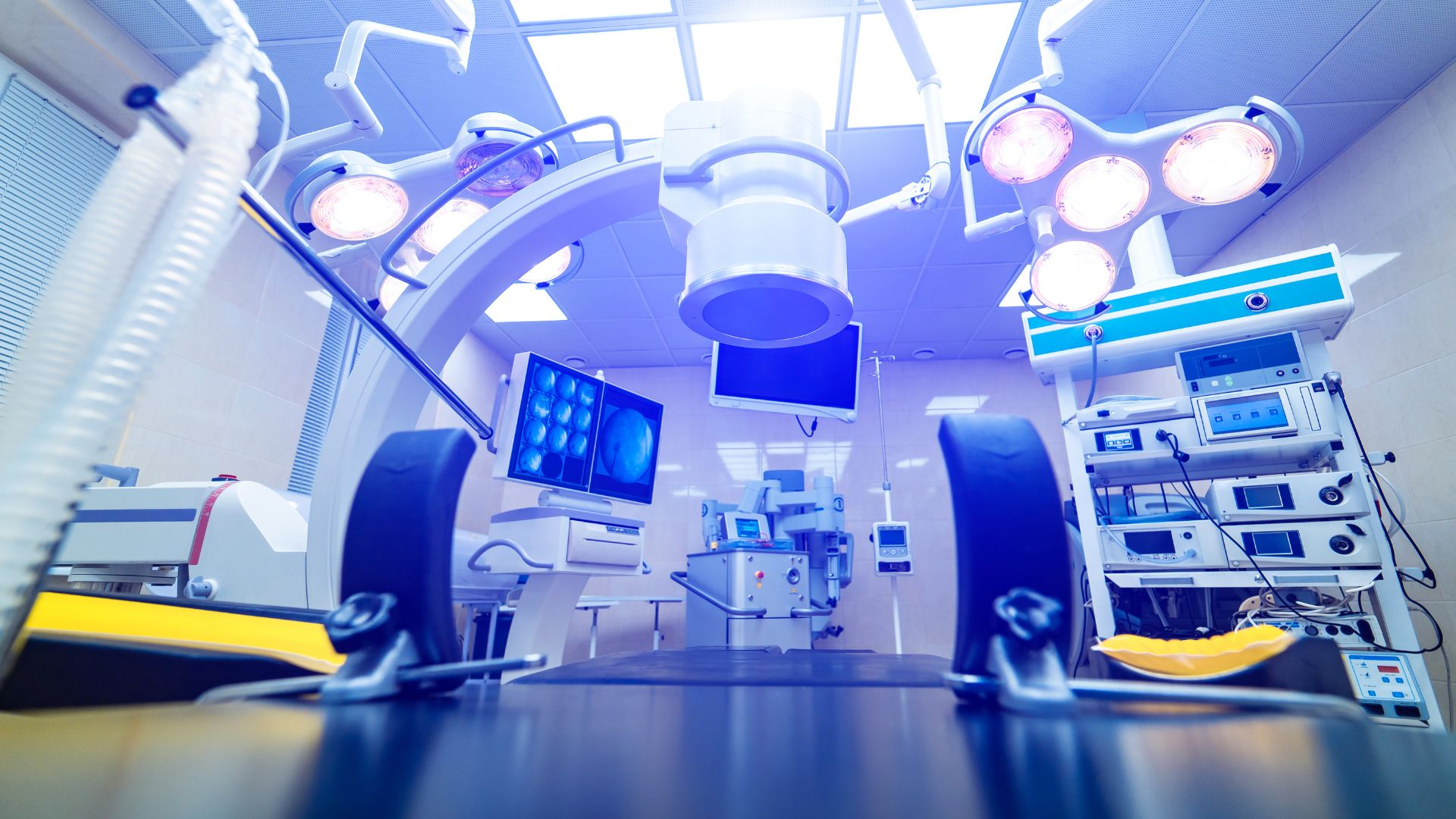Introduction to Connected Manufacturing Services
In today’s fast-paced industrial landscape, the term “connected manufacturing” is more than just a buzzword; it’s a transformative approach that integrates various technologies to enhance efficiency, productivity, and overall operational excellence.
Connected manufacturing services utilise a blend of smart devices, automation, and data analytics to create a seamless and responsive manufacturing environment. This interconnected ecosystem not only streamlines business processes, but also offers unprecedented levels of control and visibility into operations.
The adoption of connected manufacturing services is not merely a trend but a necessity for companies aiming to stay competitive. As global markets become more interconnected and consumer demands evolve, the need for agile, efficient, and sustainable manufacturing processes has never been greater.
By embracing connected manufacturing solutions, companies can not only meet these challenges head-on but also unlock new avenues for innovation and growth.
For businesses in the life sciences sector, such as Seabrook Global, connected manufacturing services offer a unique opportunity to elevate the quality and safety standards of medical devices and pharmaceuticals.
This is particularly crucial given the stringent regulatory requirements and the ever-increasing complexity on demand production of healthcare products.
The Evolution of Connected Manufacturing in Industry
Connected manufacturing has come a long way since its inception in Industry 4.0 What began as isolated efforts to automate specific tasks has evolved into a fully integrated, data-driven ecosystem.
The journey has been marked by several technological milestones, from the introduction of programmable logic controllers (PLCs) to the advent of the Industrial Internet of Things (IIoT).
The proliferation of smart sensors, machine learning algorithms, artificial intelligence, and cloud computing has accelerated this evolution, enabling real-time data collection and analytics. This has given rise to predictive maintenance, quality assurance, and even autonomous decision-making processes within the manufacturing setup.
The result is a more resilient, adaptable, and efficient manufacturing system capable of meeting the demands of a rapidly changing market landscape.
In the context of life sciences, connected manufacturing has been instrumental in achieving precision and consistency, which are paramount in the production of medical devices and pharmaceuticals.
The ability to monitor and control every aspect of the manufacturing process in real time ensures that the highest quality standards are maintained, thereby enhancing patient safety and outcomes.
Building a Connected Manufacturing Ecosystem
Creating a connected manufacturing ecosystem is not a one-off project but a strategic initiative that requires careful planning, investment, and execution.
The first step in digital transformation is to conduct a thorough assessment of the existing manufacturing processes to identify areas that would benefit most from automation and connectivity. This is followed by the selection of appropriate technologies and platforms that align with the company’s long-term objectives.
Once the foundational elements are in place, the focus shifts to integrating these disparate systems and business data into a cohesive whole. This involves not just the physical installation of sensors and devices but also the development of software solutions that can aggregate and analyse the data generated.
Interoperability is key here; the various components of the ecosystem must be able to communicate and collaborate seamlessly to achieve the desired outcomes.
For companies like Seabrook Global, which operate in the highly regulated life sciences sector, building a connected manufacturing ecosystem also entails compliance with stringent quality and safety standards.
This makes the role of data integrity and security even more critical, necessitating the implementation of robust cybersecurity measures to mine operational and business data and safeguard against potential vulnerabilities.
Connected Manufacturing for Medical Devices
In the realm of medical device manufacturing, connected manufacturing services offer unparalleled advantages.
The ability to monitor every stage of the production process in real time ensures that any deviations from the established quality parameters are immediately detected and corrected. This is vital for products that have a direct impact on patient health and safety.
Moreover, connected manufacturing enables better traceability of materials and components, which is essential for compliance with regulatory requirements. The data collected from smart manufacturing can also be used to improve the design and functionality of medical devices, thereby enhancing their efficacy and reliability.
This iterative approach to product development can significantly reduce the time-to-market, giving companies a competitive edge.
For Seabrook Global and similar life sciences companies, adopting connected manufacturing for medical devices is not just a strategic choice but a commitment to excellence and customer satisfaction.
It allows them to uphold the highest standards of quality while also driving innovation in a field that directly affects human lives.
Enhancing Operational Efficiency with IoT and Connectivity
The integration of Industrial Internet of Things (IIoT) solutions into the manufacturing process is a game-changer when it comes to operational efficiency.
Smart sensors and devices collect data from various points in the production line, feeding it into a centralised system for real-time analysis. This enables manufacturers to make informed decisions quickly, optimising workflows and reducing waste.
IoT and connectivity also facilitate remote monitoring and control, allowing for greater flexibility in managing operations. This is particularly beneficial in scenarios where quick adjustments are needed to accommodate changes in production schedules or to address unexpected issues.
The ability to respond in real time minimises downtime and ensures that the manufacturing process remains agile and resilient.
For life sciences companies like Seabrook Global, the benefits extend beyond mere operational efficiency. The data generated through IoT and connectivity can also be leveraged for research and development, quality assurance, and even for predictive analytics that can forecast market demand or identify potential bottlenecks.
In this way, IoT and connectivity serve as powerful tools for driving both efficiency and innovation in the manufacturing process.
Factory Automation and Connectivity: A Perfect Pairing
Factory automation has long been a cornerstone of modern manufacturing, driving efficiency and precision. However, when paired with connectivity, its potential is magnified exponentially.
Automation systems, equipped with smart sensors and connected devices, can communicate with each other, making real-time adjustments to optimise performance. This synergy results in a more streamlined and adaptable production process.
In the life sciences sector, where precision is paramount, the combination of automation and connectivity ensures that products are manufactured consistently to the highest standards.
For instance, automated assembly lines for medical devices can adjust in real time based on feedback from connected sensors, ensuring that each product meets the required specifications.
For companies like Seabrook Global, this pairing not only enhances production efficiency but also ensures that products are of consistent quality, a critical factor in maintaining trust and credibility in the market.
Supply Chain Integration in the Age of Connected Manufacturing
In an interconnected global economy, the supply chain plays a pivotal role in the value chains and determining a company’s success. Connected manufacturing extends its influence beyond the factory floor, integrating various stages of the supply chain.
From raw material sourcing to product distribution, every step can be monitored and optimised using data-driven insights.
This level of integration ensures a smoother flow of materials, reduces lead times, and minimises inventory costs. It also provides greater visibility into the supply chain, allowing companies to anticipate and mitigate potential supply chain disruptions.
For Seabrook Global, a seamless supply chain is crucial. Given the critical nature of life sciences products, any delay or inconsistency can have significant implications. Through connected manufacturing, they can ensure that their products reach the market promptly, maintaining a steady supply to meet global demand.
Remote Monitoring in Manufacturing: A Game Changer
The advent of remote monitoring in the manufacturing industry has revolutionised the way companies oversee their operations. No longer bound by physical presence, decision-makers can access real-time data from anywhere in the world.
This capability is invaluable, especially in scenarios where immediate intervention is required to address anomalies or optimise processes.
In the context of life sciences, remote monitoring ensures that production lines adhere to stringent quality standards. Any deviation can be promptly addressed, ensuring that the end product is of the highest quality.
For Seabrook Global, this means that their global operations can be centrally monitored, ensuring consistency and excellence across the board.
Predictive Maintenance in Manufacturing: Minimising Downtime
One of the standout benefits of connected manufacturing is the ability to predict equipment failures before they occur. Using data analytics and machine learning algorithms, manufacturers can identify patterns that indicate potential issues.
This predictive approach allows for timely maintenance, reducing unplanned downtime and associated costs.
For industries like life sciences, where production continuity is crucial, predictive maintenance can be a game-changer. It ensures that critical equipment is always in optimal condition, reducing the risk of production halts.
For Seabrook Global, this not only translates to cost savings but also ensures that they can consistently meet market and customer demand without interruptions.
Challenges and Considerations in Implementing Connected Manufacturing
While the benefits of connected manufacturing are undeniable, the journey towards its full implementation is not without challenges.
From technological hurdles to cybersecurity concerns, companies must navigate a myriad of issues. Ensuring data integrity, managing the sheer volume of data, and integrating legacy systems are just a few of the considerations.
For Seabrook Global and other life sciences companies, regulatory compliance adds another layer of complexity to business models. Ensuring that connected manufacturing systems adhere to global standards is paramount.
However, with careful planning, collaboration, and a clear vision, these challenges can be effectively addressed, paving the way for a connected and efficient future.
Conclusion: The Future of Connected Manufacturing Services
The trajectory of connected manufacturing is clear – it’s set to redefine the very fabric of the industrial landscape. As technologies continue to evolve, the possibilities are limitless.
From fully autonomous factories to AI-driven decision-making processes, the future promises even greater levels of integration and efficiency.
For companies in the life sciences sector, like Seabrook Global, this evolution offers exciting opportunities.
By staying at the forefront of connected manufacturing, they can continue to deliver products of the highest quality, drive innovation, and maintain a competitive edge in a dynamic global market.






Recent Comments